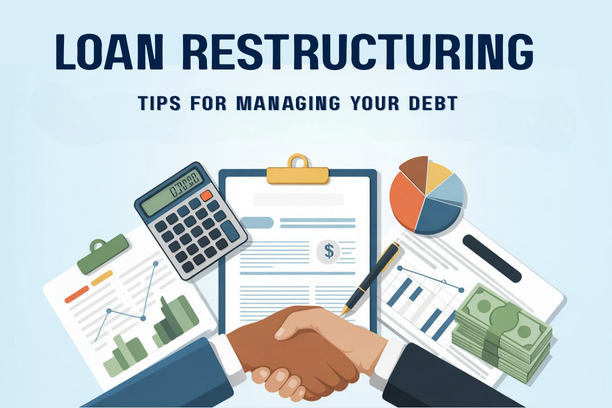Living and working in the Philippines as a foreigner offers many opportunities, but when it comes to financial services, the landscape can be challenging. Whether you need funds for a home renovation, a car purchase, or to cover an unexpected expense, securing a personal loan as a foreigner in the Philippines is often more complex than it is for a local citizen. Banks and other financial institutions have specific requirements for non-Filipinos to mitigate the perceived risk. This detailed guide will walk you through the key requirements, eligible lenders, and the step-by-step procedure to help you successfully apply for a personal loan as an expat or resident in 2025.
The Challenges and Opportunities for Foreign Borrowers
The loan market for non-Filipinos can seem daunting at first. However, by understanding the reasons behind the stricter requirements, you can better prepare your application and increase your chances of success.
Understanding the Loan Landscape for Non-Filipinos
For a foreigner, a personal loan in the Philippines is often a crucial tool for financial stability. It can provide the necessary capital for major life events without draining your savings. However, lenders in the country must consider several risk factors when dealing with non-citizens. The primary concern is the borrower’s residency status and potential flight risk. If a foreigner were to default on a loan and leave the country, the lender would have little recourse to collect the debt. This is why banks place a heavy emphasis on a stable and long-term residency visa, as well as a verifiable source of income within the Philippines.
Another key factor is the lack of a local credit history. Most foreigners do not have a credit score from a local bureau like TransUnion Philippines, which banks use to assess creditworthiness. To compensate for this, lenders will often require more extensive documentation and may even ask for a local co-maker or guarantor. Despite these challenges, securing a personal loan as a foreigner in the Philippines is far from impossible. Many major banks have recognized the growing number of expats and foreign residents and have developed specific products or policies to serve them. By presenting a strong financial profile and meeting all the necessary requirements, a foreigner can successfully get a loan and build a positive credit history in the country.
Key Obstacles to Getting a Loan
While the opportunities exist, it is important to be realistic about the obstacles. The primary challenge is proving long-term stability and financial capacity. Banks typically look for three main things: a stable job, a long-term residency visa, and a verifiable source of income. A tourist visa or a short-term work permit will almost certainly be rejected. Lenders are more inclined to approve a loan for someone with a Special Resident Retiree’s Visa (SRRV), an SRRV Investor’s Visa, or a long-term work visa like a 9(g) Visa. These visas signal a long-term commitment to living in the Philippines.
Another major hurdle is the income requirement. Even if you have a high income from a foreign source, the bank will often require a verifiable local income. This can be a regular salary from a Philippine-based company or verifiable income from a locally registered business. The lack of a local credit history also means that your loan may come with a slightly higher interest rate than a Filipino’s with the same income. However, by preparing all your documents meticulously and presenting a strong case for your stability and repayment capacity, you can overcome these obstacles. The key is to be proactive and choose a bank that is known for being expat-friendly, as they will be more familiar with the necessary procedures.
Eligible Banks and Their Requirements
While many financial institutions in the Philippines are hesitant to lend to foreigners, some major banks have specific policies that make them more accessible. This section will highlight these banks and the essential documentation you will need to prepare for your application.
Major Banks That Lend to Foreigners
The following major banks are known to offer personal loans to foreigners in the Philippines, provided they meet specific requirements:
- BPI (Bank of the Philippine Islands): BPI is one of the most expat-friendly banks in the country. They offer a personal loan that non-Filipinos can apply for, but it is primarily for those with a long-term work visa and a stable job with a reputable Philippine company. The required minimum income is often higher for foreigners, and they will need to show a clear history of stable employment.
- BDO (Banco de Oro): As the largest bank in the Philippines, BDO also has a personal loan product for foreigners. They place a strong emphasis on the applicant’s visa status and employment. A significant advantage of BDO is their wide network and brand recognition, which makes the process more familiar for many. Having an existing bank account with BDO can also significantly help your application.
- Metrobank: Metrobank is another strong contender. They will consider loan applications from foreigners who have a long-term and stable residency in the country. Metrobank’s application process is rigorous, but they are known for their transparency and customer service. They will require comprehensive documentation to prove both your residency and your financial capacity.
- UnionBank: UnionBank, known for its digital-first approach, also offers personal loans that foreigners can apply for. Their online application process is streamlined, and they may use alternative data points to assess creditworthiness. However, they will still require proof of long-term residency and a verifiable local income.
Essential Documentation for Your Application
To successfully apply for a loan, you must be prepared with a complete set of documents. Here is a list of the essential documents you will need when securing a personal loan as a foreigner in the Philippines:

- Visa and ACR I-Card: You will need to provide a copy of your passport with a valid long-term visa (such as an SRRV, 9(g) Work Visa, or other residency visas) and your Alien Certificate of Registration Identity Card (ACR I-Card). These are non-negotiable requirements for almost all lenders.
- Proof of Income: This is the most crucial document. You will need to provide your Certificate of Employment (COE) from your Philippine-based company, along with recent payslips (at least 3-6 months) and a copy of your latest Income Tax Return (ITR).
- Proof of Billing: To prove your residency, you will need to provide a recent utility bill, such as an electricity or water bill, in your name and with your local address.
- Bank Statements: Banks will want to see your bank statements (at least 3-6 months) to verify your income and spending habits. Having a local bank account with a good credit standing is highly beneficial.
The Step-by-Step Application Process
The application process for a foreigner is similar to that of a Filipino citizen, but with a few key differences in the documentation and verification stages. Here is a general step-by-step guide to help you get started.
The General Loan Application Procedure
The loan application process for a foreigner typically involves the following steps:
- Choose a Bank: Select a bank that is known for lending to foreigners, such as BPI, BDO, or Metrobank. Visit their website or a physical branch to get the most up-to-date information on their personal loan products.
- Prepare Your Documents: Gather all the required documents, paying special attention to your visa and proof of income. Ensure all documents are valid and up to date.
- Submit Your Application: You can submit your application online or in person at a bank branch. For foreigners, it is often more beneficial to go to a branch, as you can speak with a loan officer who can guide you through the process and answer any specific questions.
- Credit and Document Verification: The bank will conduct a thorough review of your submitted documents and may perform a credit check. They may also call your employer to verify your employment. This is a critical stage, and it is important to be reachable during this time.
- Approval and Disbursement: If your application is approved, you will be notified, and the loan amount will be disbursed to your bank account. You will then begin your monthly repayment schedule.
Building Your Creditworthiness as an Expat
Since many expats do not have a local credit history, it is a good idea to start building one as soon as you can. A positive credit history can significantly improve your chances of getting a loan and may even help you secure a better interest rate in the future.
Here are some tips for building your creditworthiness:
- Get a Local Bank Account: Having a local bank account and using it for all your transactions is the first step. It provides a financial record that banks can look at when assessing your application.
- Apply for a Credit Card: Getting a local credit card and using it responsibly is one of the best ways to build a credit history. Be sure to pay your bills on time and in full every month.
- Get a Secured Loan First: If you are having trouble getting an unsecured loan, you can try for a secured loan, like a car loan, with a substantial down payment. This can help you demonstrate your ability to repay debt.
Conclusion
Securing a personal loan as a foreigner in the Philippines is a challenging but achievable goal. While the requirements are stricter than for a Filipino citizen, a long-term residency visa, a stable local income, and a complete set of documentation can significantly improve your chances. By choosing a reputable and expat-friendly bank and proactively building a local credit history, you can successfully navigate the loan market and secure the funds you need to thrive in the Philippines.













